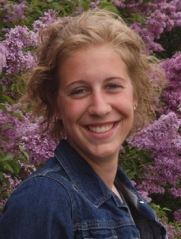Miracle Kids: Michelle Plotzker
Teen Proves She's Got 'Guts'
 In May 2006, Fairport teen Michelle Plotzker noticed some bleeding in her stool.
In May 2006, Fairport teen Michelle Plotzker noticed some bleeding in her stool.
It was an off-putting surprise, but Michelle had a good idea of what might be to blame — a rare inflammatory bowel disease called ulcerative colitis, that, in part genetic, had already needled its way into her family tree.
Later that summer, tests confirmed that 16-year-old Michelle indeed had this type of colitis, which causes open sores in her large intestine and colon, making certain foods extremely painful to digest.
“With the worst flare ups, I would only be able to stomach Rice Krispies and chicken soup,” Michelle said.
Since ulcerative colitis—much like its cousin sickness, Crohn’s disease— brings a rollercoaster of periodic flare up and remission, Plotzker and her parents, John and Cindy, hoped that a medication might help manage it. Michelle tried that route for a while, playing varsity volleyball and beginning a course of oral steroids diagnosed by her pediatric gastroenterologist at Strong, Thomas Rossi, M.D.
“For a stretch, that was enough,” Michelle said.
But by the first of November, the steroids weren’t enough anymore; Michelle became unusually sick and so severely dehydrated, she was admitted to Golisano Children’s Hospital. There, specialists tried a steroid enema, hoping that it would be more effective than the oral medications and bring the disease back under control.
But that didn’t work, either. Nor did Remicade, an advanced infusion treatment hailed for stalling the disease and reducing pain. By then, Michelle had lost 25 pounds and was suffering intractable bleeding that, without intervention, could ultimately lead to death.
Transfusions sustained Michelle for some time, but they weren’t a permanent solution. So, after much counsel and 34 days of test-driving treatments, Michelle decided to forgo a chemotherapy drug (her last non-invasive resort) and get straight on with surgery to remove her colon.
“I wanted to be better,” she said. I had missed my Thanksgiving dinner and my grandmother’s peanut butter chocolate pie.”
Decided on this course, Walter Pegoli, Jr., M.D., pediatric surgeon-in-chief at Golisano Children’s Hospital at Strong, met with Michelle and her family to explain what would happen. First, he would remove Michelle’s colon, and temporarily bring her small intestine through her abdominal wall while she healed. Then, after two follow-up surgeries the following summer, would reconnect her intestine to her anus.
“A nurse told me to bring in my favorite pair of jeans, and we’d decide where we wanted this all to happen,” Michelle said. “And after a make-believe run through on a pillow, I was as ready as I could be.”
Michelle’s surgery on Dec. 4 went smoothly. Soon after, she was feeling better, though sore.
Four days later, she was home, celebrating a make-up Thanksgiving and finally able to relish bits of everything for the first time in months. Come January, she was back to school and getting on with traditional teenage fare— prom, dizzying college decisions, and her spring sport, softball.
Finally, during the summer of 2007, after Michelle sailed through her two follow-up surgeries, she was declared cured.
“As an adolescent, Michelle’s maturity and grace is beyond her years. To come through such a stressful period of her life with such humor, such spirit— that makes her a miracle,” Pegoli said.
Michelle, always on the move, lives life full-tilt—she’s an Explorer program volunteer at the fire department, holds down a part-time job and plays two sports each year. She enjoys science, and is considering a career in veterinary medicine or zoology.
She’s also found a way to thank the hospital that helped heal her; unashamed of her scars, she coaches other kids through similar procedures.
“I tell them it’s going to be okay. If I can make them just a fraction less scared, I’ve done something,” she said.